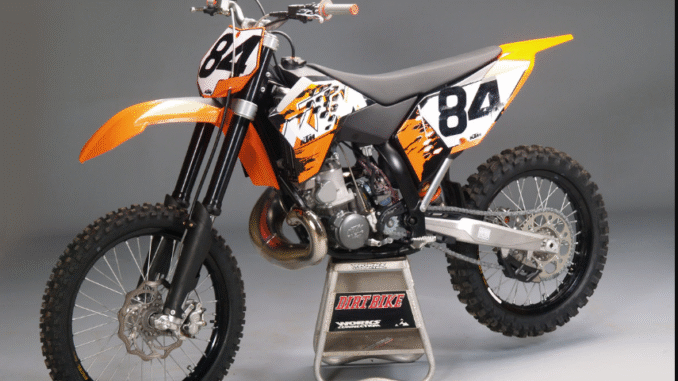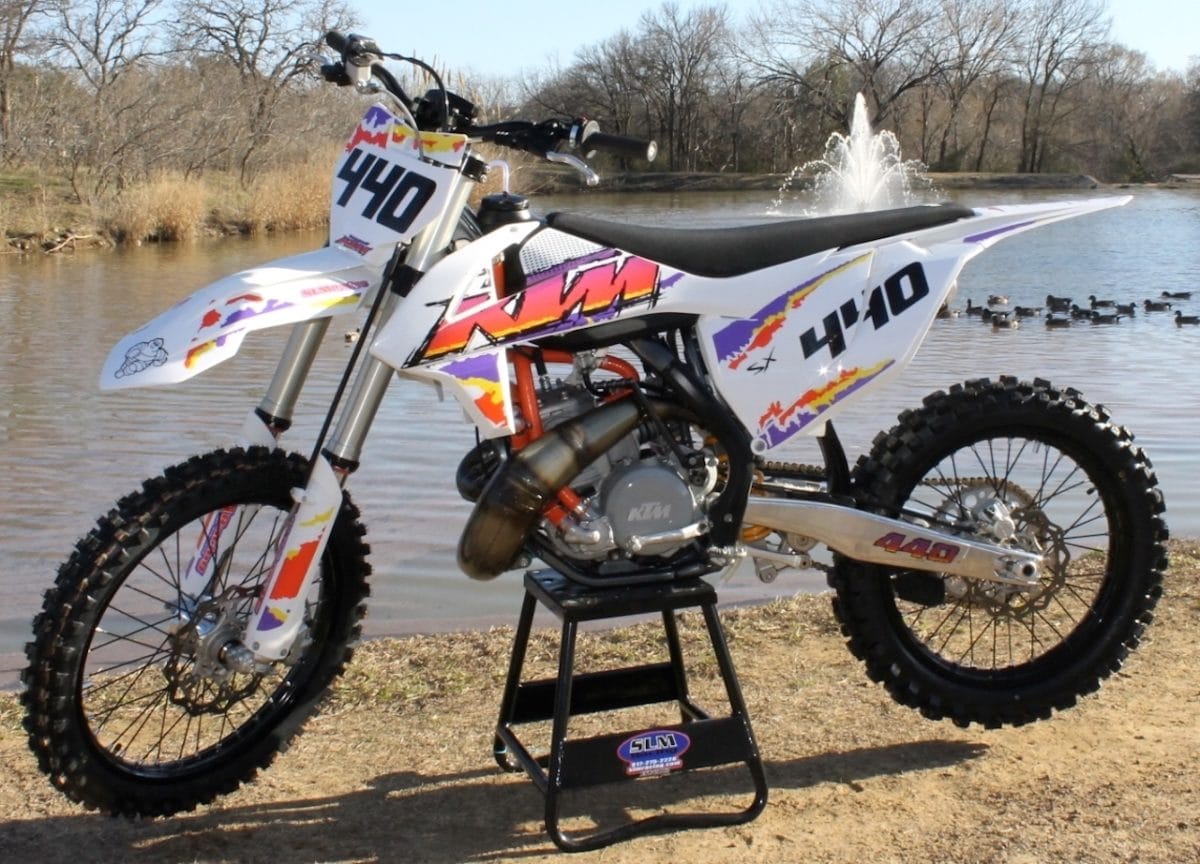
Two-stroke vs. Four-stroke: Cody Webb Gives Us The Lowdown:Webb’s insight on the advantages of two-strokes versus four-strokes in off-road racing applications



Four
Cody feels more at home on the four-stroke when it comes to EnduroCross and Super Enduro. In 2016, he rode a 250 XC-F in the EnduroCross series, but for 2017 he has graduated to the 350 EXC-F. “We started prepping for 2017 the day after the 2016 championship,” Cody says. “I started testing the 350 PDS the next day after I lost the championship to Colton Haaker. I was scrambling trying to find something better. So, I basically just started riding Taddy’s [Blazusiak] bike and I liked it.”
One early issue with the 350 was that he tended to stall it, something he never did on the 250. But, “KTM slowed down the engine with a heavier crank and pretty much turned the bike into a tractor,” Cody says. “At the same time they made it rev quicker [with some ECU changes].” The bike pulled really good and Cody didn’t stall as much. As for an auto clutch solution? “I love the auto clutch and I hate it at the same time,” he says. “It almost becomes a crutch for some people, and for me the biggest benefit was only when I had arm-pump. I still prefer the feel of a stock clutch just from riding trials, but I think they’re great for someone like me who suffers from really bad arm-pump.”
“The two-stroke motor was great in the rocks and good in the Matrix. It was definitely lighter, but it just felt twitchy when I was jumping off stuff. I had no consistency hitting the jumps… I would go off something and maybe I wouldn’t be on the gas enough, so it kind of bogged down a little bit too much off the lip. The next lap you come out and you’re like, ‘Oh, I got [to give it] a little bit more.’ You would do it just too much and the thing would sky-shoot you too high and too far. I knew EnduroCross was supposed to be kind of changing gears a little bit this year with the tracks, and they were trying to make things easier. So I just figured I’m fast on either bike, but if I’m feeling more consistent and I can do things lap after lap with less effort on the four-stroke I’m going to stick with that.
“There’s more weight with the four-stroke, but you can kind of just get in a rhythm,” Cody continues. “You don’t have to try as hard to go as fast. With EnduroCross usually being pretty hard-packed—corners and jumps that are pretty hardpack, and a lot of times they water it a little bit too much so it gets pretty greasy. I just figured riding the four-stroke with that easy torque, I can get better grip going around the corners than having to clutch it like crazy to build power and not bog down too much. Then with how much easier it is to jump for me on a four-stroke, it was a no-brainer.

“I don’t know if it’s the weight or just the inertia of the motor and everything else going on there why it feels heavier and more planted, but I think it’s definitely a mixture of both,” he says. “I think all that circulating mass in the motor definitely has an effect where it makes the bike feel like it’s driving straighter.
“This year I feel like the rocks look gnarly in EnduroCross, but I’ve been riding them without much effort,” Cody says. “I don’t know if it’s the bike or my confidence. But if the rock sections had bigger holes in them and [the tracks had a] tougher Matrix, for sure I’d be on a two-stroke.”
Two
“The two-stroke does have a little bit of a traction deficit, but you’re not going to be wide open in the rocks spinning the tire,” Cody says. “That’s just not how you ride rocks. You’d be a little bit lower in the meat end of the power where it pulls. With the two-stroke I find I can almost dance and pick my way through the rocks and hit points. Sometimes with the four-stroke if you get bogged off your line a little bit, it’s a lot more effort to get re-situated and get going again. So, either a long, straight rock garden or one with turns, the two-stroke just feels a lot more nimble, which can get you in trouble, but it can get you out of trouble a lot easier than the four-stroke does.
“A lot of times the front end will kind of skate and dance with the two-stroke,” Cody continues. “But it’s kind of easier to get it back in line again… On my two-stroke if I’m going through something I can almost be in the rocks and kick the rear end off a rock and land on another one and keep going. With the four-stroke it’s trickier to do that. Probably because it’s firing every other time. That makes the bike feel a little heavier. If there’s a hole right in front of me and I see a big rock I want to hit over there; on the two-stroke you can flick the bike around a lot easier in the rocks.”
Cody, sounding like the engineer that he is, points out that the two-stroke power curve is, “more of an exponential curve where it kind of just ramps up slowly and then all of a sudden it will start pulling up really quick, and then it just shoots up.” But in an extreme enduro Cody can stay in that low-end meat the whole time without having to pin it, unless he’s doing a hill climb.
“For the extreme stuff, without a doubt I would be on a two-stroke and nothing else,” Cody says. “You can do it all, but in terms of longevity and getting the bike to survive it’s way more risky to be on a four-stroke versus a two-stroke—at least in an extreme race.”
Overheating (and the resulting clutch fade from it) plus extra weight are the big concerns with the four-stroke, which is why you’ll see Cody on a two-stroke at the longer extreme races.
You
“For getting the front end up in the air [to get over an obstacle], a two-stroke is probably a little bit easier. You can flick it around a lot easier, but it takes a little bit more effort with the clutch and throttle. The four-stroke has an instantaneous little pull right off the bat, but it’s more of a torque pull instead of a quick pop. So, the four-stroke you can have a short drive at something and it’ll just pull you off something. It doesn’t have that nimble feeling that the two-stroke does. I find myself using the clutch more on the two-strokes than the four-strokes for sure, just to get the bike to snap quick on the two-stroke.”
For the average off-road rider, Cody suggests a two-stroke. His pick for the rider not going to the track would be, giving examples through the KTM line, the 250 or 300 XC-W because of the suspension that’s easier to live with (no linkage to grease and no air fork pressure to check) as well as no linkage to hang up on obstacles. The XC would be for the off-road rider who might occasionally hit a moto track. And for the rider who foresees jumps ahead of the handlebar, Cody would steer that rider to the four-stroke.
It’s great to have choices and unique that a current rider at the top of the sport actually moves back and forth from two-stroke to four-stroke throughout the season based on the event he’s facing.
Leave a Reply